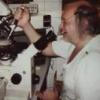.
C O M P L E T E T I T L E : Quality of induced pluripotent stem cells is dramatically enhanced by omitting what was thought to be the most crucial reprogramming factor.
S O U R C E : Max Planck Institute for Molecular Medicine.

Oct4 is not only unnecessary but damaging during generation of mouse induced pluripotent stem cells (iPSCs).
Scientists at the Max Planck Institute for Molecular Biomedicine in Münster showed that Oct4, a factor most commonly used for reprogramming, is detrimental for the quality of induced pluripotent stem cells (iPSCs). Omitting Oct4 from the reprogramming cocktail allowed for the generation of mouse iPSCs with the highest developmental potential reported to date (Cell Stem Cell, November 7, 2019, epub ahead of print).
Embryonic stem cells (ESCs) that comprise the inner cell mass of an early mammalian embryo, called blastocyst, possess the unique power of pluripotency. These cells can divide indefinitely and retain their ability to differentiate into any tissue type or even give rise to a complete animal when transferred back into a blastocyst. The technology of proliferation and differentiation of pluripotent cells in vitro holds tremendous potential both for understanding human development and for clinical applications, such as drug screening and regenerative cell therapies.
The derivation of human ESC lines and their usage for research, however, remain controversial. Germany has a rather strict Stem Cell Act, not only prohibiting the generation of human ESC lines but also any research involving ESCs derived after 2007 from otherwise discarded embryos in fertility clinics in other countries.
The iPSC technology pioneered by Shinya Yamanaka allows for reprogramming of adult cells, such as skin fibroblasts, back to an ESC-like state by forceful overexpression of four transcription factors: Oct4, Sox2, Klf4, and cMyc (OSKM). While posited by many as the ultimate replacement of ESCs, multiple studies showed that iPSCs do not quite match the ‘gold standard’ ESCs in their developmental potential. The reprogramming process appears to be too crude, often leading to potentially cancerous aberrations such as loss of epigenetic silencing at specific loci in the genome inherited from one of the parents, known genomic imprinting. For the mouse model, this results in the failure of many of OSKM iPSC lines to support normal differentiation. The exact origin of or agent that causes these changes has never been determined.
A team headed by Hans Schöler were exploring the roles of different components of the Yamanka cocktail in reprogramming to pluripotency. Sergiy Velychko, PhD candidate who led the experiments, explains: “We created a new construct in which we removed Oct4 from the reprogramming vector to serve as a negative control. To my great surprise the control SKM-construct could generate iPSCs with high efficiency only slightly delayed, comparing to OSKM.” Other studies that used a SKM-construct showed no reprogramming. “We later found that the discrepancy with previous studies could be explained by the retroviral vectors that Yamanaka, and many others, used in their experiments,” says Velychko. “Those retroviral vectors can silence themselves, halting the reprogramming process altogether.”
.../...
F O R T H E R E S T O F T H E A R T I C L E , P L E A S E V I S I T T H E S O U R C E .
.










































